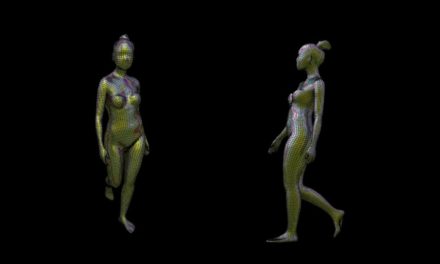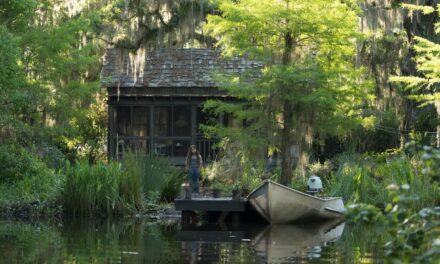You’re a princely VFX artist living up in a cool medieval tower where you take perfume baths once a month, and you want to put on a little burlap hood to go see what it’s like in the street with the peasant folk and their apple carts.
You get down deep in the comment section mud, and you realize down here on Reddit film forums, it feels like medieval tavern banter in 1342. Opinions are harsher. Attitudes polarized. It takes some deep sifting to know whether this is an evidence-based perspective or if this is the view of a one-eyed peasant who lives in some internet straw.
Here are two facts about Jordan Peele’s Nope:
- Nope made the Oscar shortlist for “Best VFX” but was snubbed for any VES nominations.
- People continue to write and talk about the behind-the-scenes elements of Nope a full seven months after it’s been released.
Wherever you align yourself in the fiefdom of VFX enthusiasm, there’s no judgment here. The technical quality of the Nope VFX is worth exploring for peasants and royalty alike.
We’re gonna do just that.
The argument for a rightful award snubbing: The ‘Nope’ VFX were too simple
In a February 2nd excerpt from befores & afters magazines, Art Director Lèandre Lagrange discussed the initial concept of shaping and designing the sky creature that anchors Nope:
There’s the idea of the flying saucer and the shape of it. It’s like a shell. You could just go to, how do you open? Is it a clam? But the fact that he (Jordan Peele) said that notion of origami was definitely very helpful, and to a point that the first sketches that I did and the first things we talked about were actually what we went for in the end.
Different interviews with Lagrange and Jordan Peele and VFX Supervisor Guillaume Rocheron provided an eclectic array of descriptors to accurately pinpoint this “Jean Jacket” creature: “origami”, “sand dollar”, and “jellyfish” were a few. These all have a beautiful literary ring to them when applied to horror, but how hard is it for a seasoned VFX artist to create a CG sand dollar? The way the finished product was received by internet folk ranged from viscerally thrilled to “meh”:
u/D3V1LSHARK: Visually the creature design was very minimal. The interior shot of its digestion? Tube was pretty generic as well.
u/toofarbyfar: It’s a good monster, but is it a particularly impressive visual effect? We mostly just see an abstract shape in the cloud…
u/Pixelated_Piracy: Jordan Peele could film a dog shit turning slowly white on a kodak from 1970 and people would call art at this point and say it was deliberate and thought provoking
While the Nope VFX feedback was mostly positive, it didn’t require a depth of cherrypicking to pull quotes like this. The “overly simple VFX” receptions weren’t far from VFX Supervisor Guillaume Rocheron’s initial direction from Jordan Peele to create a monster that was minimalist to produce. In an interview with befores & afters, Rocheron said:
So we started a few rounds of designs on this and then very quickly we came in with a very Evangelion-esque alien entity that looked like he was an origami, at the same time, a very simple design. I think Jordan fell in love with it.
So we said, ‘This is the language,’ and then we started to design the saucer. We then knew we wanted these very simplistic shapes, very little textures, very little features, very much ‘not much’.
Despite healthy public appreciation for the sound execution and VFX, Nope was not nominated for an Oscar or a VES Award. One wonders if the voting bodies just didn’t feel compelled enough by the subtlety of the Nope sky effects shots to appreciate it on the same bombastic level as a frontrunner like Avatar: The Way of Water.
The counterargument: The ‘Nope’ VFX and day-for-night scenes were underappreciated for their creativity
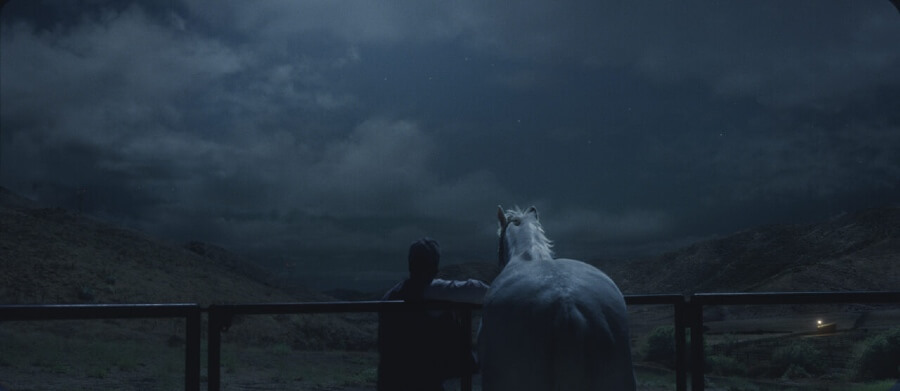
Photo credit: MPC
u/Bilski1ski: While watching it I seriously thought this is best night filming I’ve ever seen. It’s pretty mind blowing to find out it was filmed at day
This was a common sentiment as in-depth breakdowns about the day-for-night method used by DP Hoyte van Hoytema came out. Hoytema used a dual setup of an ALEXA 65mm infrared camera and a 35mm film camera to shoot the day-for-night scenes and blend the footage into an environment where all the night shots would be photorealistic visual effects shots. No Film School did a breakdown of an interview by Kodak with Hoyte van Hoytema, where he described how they had to film the sequences with no light source to create an immersive perception that these characters were in actual space.
The sky was often compared to the ocean in Jaws – an environment that reflects immersive terror and impending danger, yet it also grounds the audience in nature. There couldn’t be a hint that this was anything other than a real monster in a real desert night sky. In his interview with MPC, Rocheron said:
It had to be incredibly invisible to the audience, so no one said I’m looking at a digital sky,” says Rocheron. “The challenge was different because our whole movie was about the sky.
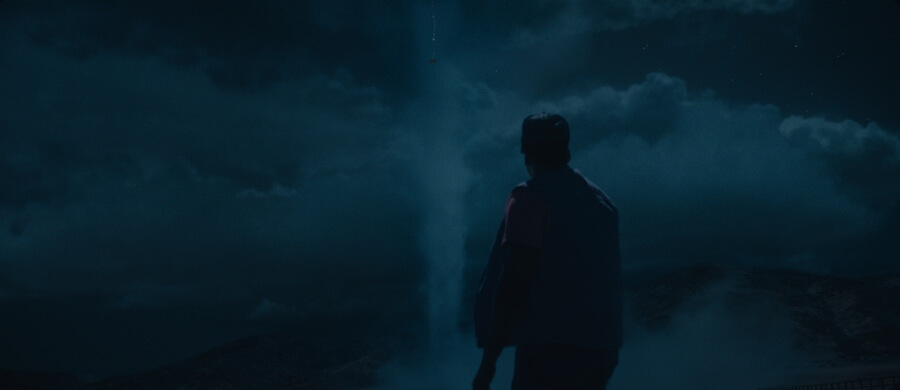
Photo credit: Universal Studios
The most pressing pitfall Hoytema described, and a common attitude, is that day-for-night photography is never fully credible – there’s a mismatch between the daylight and darkness and it doesn’t feel truly authentic. Hoytema’s hybrid usage of the 35mm with the ALEXA 65 allowed them to take the infrared black and white footage with the night contrast, and blend it with the 35mm color footage in post to create their realistic skyscape. They could then adjust the color and light gradients to achieve the immersive effect.
To build a sky playground for the Jean Jacket, animators created cloud plates and then simulated every single cloud into the shot, taking it as precise as utilizing real wind currents and directions. These clouds were placed strategically to elicit maximum tension. In any given scene, Peele had a chess piece to move around when he was ready for a reveal.
The methods used by Peele, Rocheron, and the team of artists that worked on the predatory night sky don’t show a film undeserving of technical praise with oversimplified VFX techniques. Like so many films, the most effective VFX were entirely hidden in plain sight.
The most memorable hunter-prey films dunked the audience in an immersive piece of nature
Many of the most memorable hunter-prey films of all time earned their status with some key foundational elements: a hunter that is ever-watching. Completely unpredictable kill timing. And an immersive environment that is out of our human control. Think Predator in the jungle. Jaws in the ocean. Now Nope has attempted to conquer the sky.
The metrics to judge a film’s success will always be subjective – box office earnings and awards don’t always translate to lasting resonance. But if you walk outside at midnight in five years and take an anxious glance up at the cloud cover?
You can thank hidden VFX just before you quick-step back into the house.

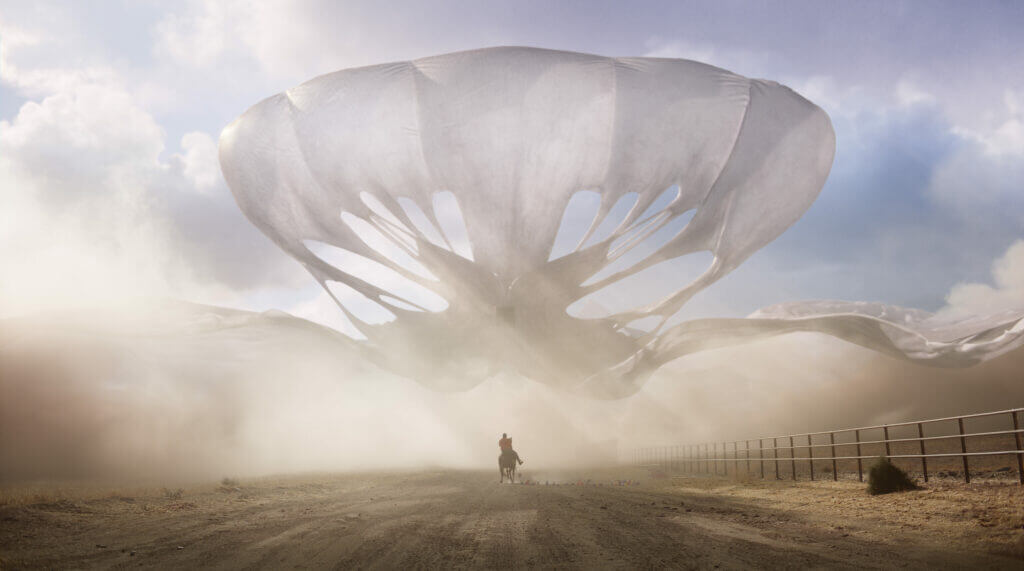
![Love, Death + Robots Visual & Audio Effects [BTS]](https://wellfixitinpost.com/wp-content/uploads/2022/07/love-death-robots-animation-feat-01-res-440x264.jpg)
